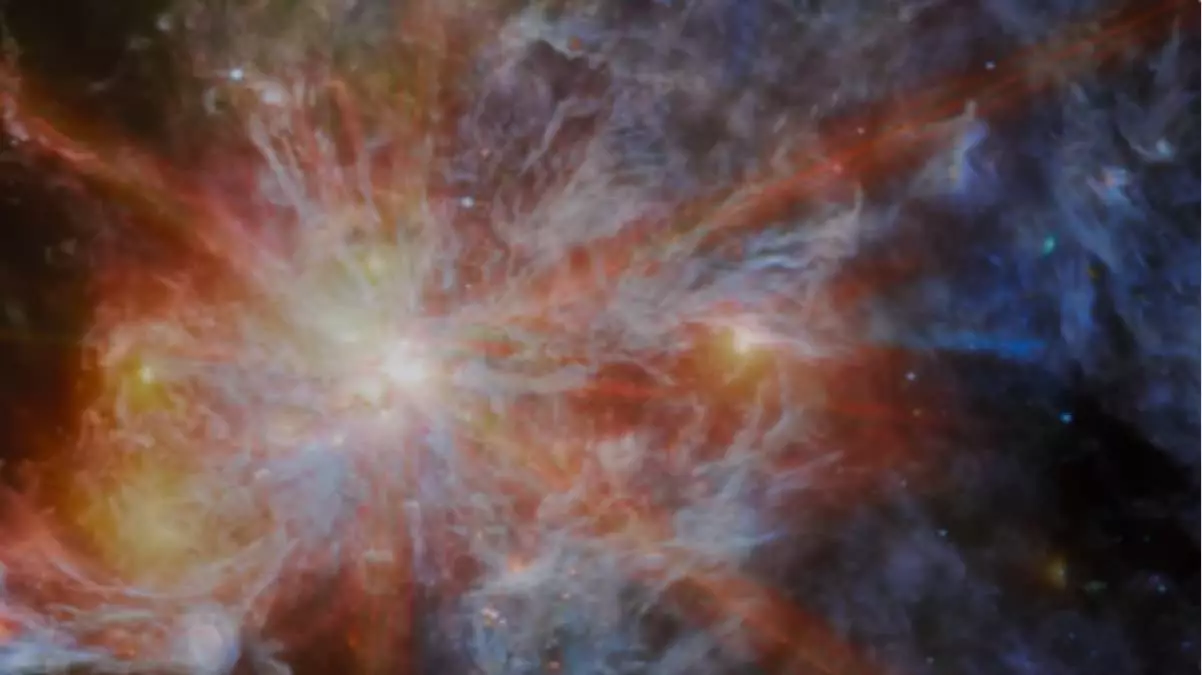The James Webb Space Telescope (JWST) stands at the forefront of astronomical exploration, having recently spotlighted five candidate galaxies that could date to around 200 million years after the Big Bang. This astonishing revelation, if substantiated, would place these galaxies among the first celestial structures in existence and offer unprecedented glimpses into the universe’s formative moments. Positioned approximately 13.6 billion light-years from Earth, these distant galaxies represent a treasure trove of information about the very fabric of our cosmos, waiting to be unraveled by future investigations.
The remarkable discovery is rooted in the innovative methods employed by researchers, particularly the technique of gravitational lensing. This phenomenon, foreseen by Einstein’s theory of general relativity, enables scientists to utilize massive objects—such as galaxy clusters—to warp spacetime and amplify the light from objects behind them. The specific galaxy cluster utilized in this research, Abell S1063, acted as a cosmic lens, intensifying the faint light emitted by these ancient galaxies and allowing the JWST to capture data that would have otherwise remained hidden in the cosmic shadows.
Unlike its predecessor, the Hubble Space Telescope, which primarily observes in optical wavelengths, the JWST focuses on infrared light. This capability is pivotal in studying the early universe, where light has been stretched due to cosmic expansion, rendering it redder as it travels through space. By detecting this redshifted light, researchers are pushing the boundaries of observational astronomy, seeking to challenge and refine existing theories of galaxy formation.
Implications for Cosmic History
Should these findings be confirmed, they could significantly alter our comprehension of the origins of galaxies. The potential to discover galaxies that predate the previously oldest known galaxy, JADES-GS-z14-0, by about 90 million years raises intriguing questions about the processes that shaped the universe during its youth. The mere presence of these candidate galaxies in proximity hints at a densely populated region of the cosmos, potentially brimming with even more structures waiting to be discovered.
This rapid assembly of early galaxies suggests several theories that could explain their formation. Researchers are contemplating scenarios involving the emergence of supermassive black holes, the feedback from supernova explosions, or even the influence of dark energy in shaping the early universe. Each hypothesis presents a distinct perspective on the complex interactions that may have occurred in those primordial times.
As the JWST continues its mission, the implications of these findings extend far beyond mere academic curiosity. They underscore the telescope’s groundbreaking capability to challenge existing narratives about cosmic history. If these potential galaxies are validated, they will reshape our understanding of the timeline of the universe and deepen our insight into the forces that orchestrated the cosmos in its infancy.
The JWST’s discoveries embody a shift in our quest to understand the universe. With every observation, we inch closer to answering fundamental questions about galaxy formation and the conditions that prevailed immediately after the Big Bang. The next steps in this ambitious journey hold the promise of revolutionizing our perspective on the cosmos and its evolution, establishing the JWST not just as a telescope, but as a beacon of enlightenment in the field of astrophysics.


Leave a Reply